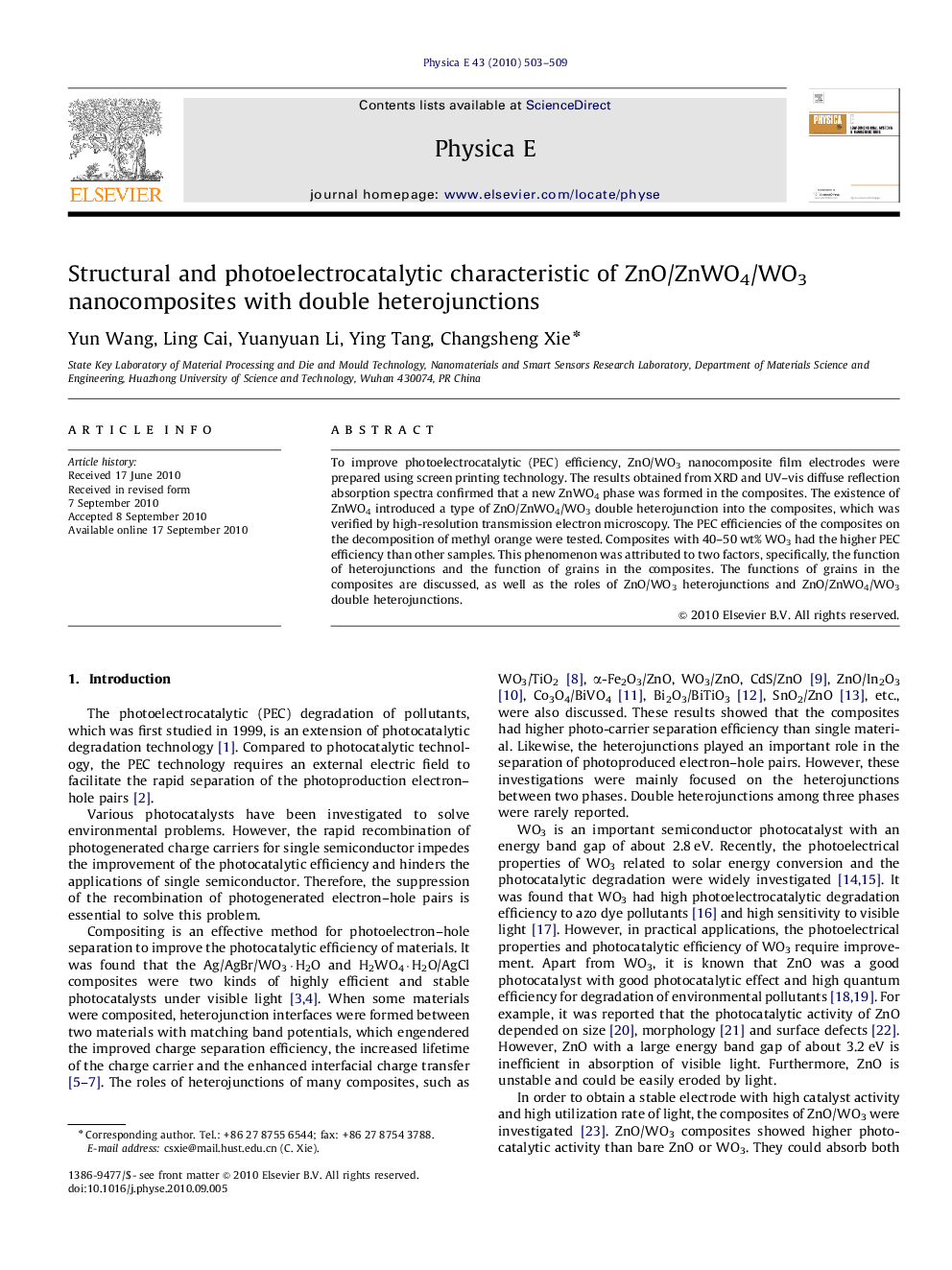| Article ID | Journal | Published Year | Pages | File Type |
|---|---|---|---|---|
| 1545568 | Physica E: Low-dimensional Systems and Nanostructures | 2010 | 7 Pages |
To improve photoelectrocatalytic (PEC) efficiency, ZnO/WO3 nanocomposite film electrodes were prepared using screen printing technology. The results obtained from XRD and UV–vis diffuse reflection absorption spectra confirmed that a new ZnWO4 phase was formed in the composites. The existence of ZnWO4 introduced a type of ZnO/ZnWO4/WO3 double heterojunction into the composites, which was verified by high-resolution transmission electron microscopy. The PEC efficiencies of the composites on the decomposition of methyl orange were tested. Composites with 40–50 wt% WO3 had the higher PEC efficiency than other samples. This phenomenon was attributed to two factors, specifically, the function of heterojunctions and the function of grains in the composites. The functions of grains in the composites are discussed, as well as the roles of ZnO/WO3 heterojunctions and ZnO/ZnWO4/WO3 double heterojunctions.
Graphical abstractThe decomposition efficiency of the electrode with 40–50 wt% WO3 was higher than those of other samples. Both heterojunctions and grains contributed to this phenomenon. Figure optionsDownload full-size imageDownload as PowerPoint slide
